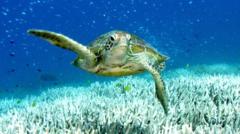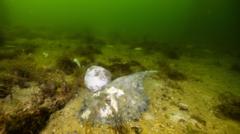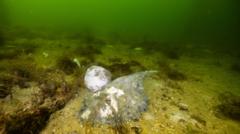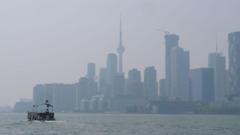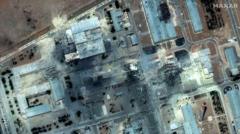A radioactive wasp nest was recently found at a former US nuclear weapons site in South Carolina, displaying radiation levels exceeding safety regulations. While investigators state there is no current threat to the environment or public health, environmental groups demand transparency on the source of the contamination.
Radioactive Wasp Nest Discovered at South Carolina Nuclear Site
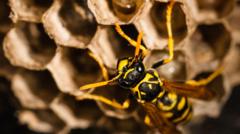
Radioactive Wasp Nest Discovered at South Carolina Nuclear Site
Federal officials report a radioactive wasp nest at the Savannah River Site, raising environmental concerns amid assurances of safety.
A radioactive wasp nest with radiation levels ten times higher than allowable standards was discovered at the Savannah River Site (SRS), a facility previously responsible for producing components for US nuclear weapons, federal authorities reported. According to a recent Department of Energy report, the wasp nest was treated with pesticide to eliminate the wasps and subsequently placed in containment as radiological waste.
The investigation confirmed that no wasps were present at the site, which is located near Aiken, South Carolina. Officials have clarified that this contamination is not indicative of a nuclear waste leak and asserted that there has been no impact on public health or the environment.
The nest was uncovered on July 3 by routine inspections conducted by workers monitoring nuclear radiation levels at SRS. It was found perched on a post close to the storage area containing millions of gallons of liquid nuclear waste, yet the report confirmed that no leaks occurred from the storage tanks. Investigators reasoned that the elevated radiation levels stem from "onsite legacy radioactive contamination," a residual result from the site's historical operations producing plutonium for nuclear bombs during the Cold War era.
The Savannah River Site, established in the 1950s, continues to function today, shifting operations towards nuclear materials for power generation. It is noteworthy that the energy department's report states the wasps residing in the nest would have experienced significantly lower radiation exposure than the nest itself. Furthermore, wasps typically fly only a short distance from their nests. Given that the nest was located within the expansive 310-square-mile site, the likelihood of the wasps impacting areas outside the facility is minimal.
Despite these reassurances, watchdog group Savannah River Site Watch has expressed frustration over the lack of clarity regarding potential sources of radioactive contamination linked to the site. Spokesman Tom Clements voiced concern over unanswered questions, emphasizing the necessity for transparency about whether there might be leaks from waste tanks that warrant public awareness.
Historically, SRS has been responsible for generating over 165 million gallons (625 million liters) of liquid nuclear waste, with 43 underground tanks currently in operation and eight tanks already closed. The ongoing scrutiny and advocacy from environmental groups against complacency highlight a pressing need for vigilance as the site continues its operations.




